Photographs: Mark Edwards/Keystone Features/Getty Images
For 40 long years a wizened, tiny, frail, hunched-over nun determinedly served the people -- all people -- of Kolkata, like no one ever had before. She walked the streets of Kolkata, through the underbelly of the teeming megapolis, to loathsome places where no one dared to go.
She healed the wounds, pain and loneliness of unfortunate, wretched human beings that people didn't have the courage to look at, let alone soothe, touch and hug.
She was Blessed Mother Teresa of Kolkata.
Seventeen years after her death, we respectfully remember and honour this Saint.
Please
PHOTOS: Remembering Mother Teresa
Image: Mother Teresa with a child in Kolkata.Photographs: Mark Edwards/Keystone Features/Getty Images
Born in 1910 in an Albanian family in Skopje, Macedonia (former Yugoslavia), journeyed to Ireland to join the Sisters of Loreto when she was 18.
She landed in Darjeeling, West Bengal, when she was 19 and began teaching Indian school children. She later moved to eastern Kolkata, where she had a disturbing front row view of Kolkata's poor facing famine and Hindu-Muslim riots.
When she was 36, and had spent 18 years in the Loreto order, she got her 'call from god' while travelling on a train to Darjeeling.
She described it thus: 'I was to leave the convent and help the poor while living among them. It was an order. To fail would have been to break the faith.'
Please ...
PHOTOS: Remembering Mother Teresa
Image: Mother Teresa in KolkataPhotographs: Keystone Features/Getty Images
She began her work with the help of the Little Sisters of the Poor in Kolkata. They offered her a little space from which to establish a base. Mother Teresa started with a small open-air school for slum kids in Motijheel in northeastern Kolkata with no supplies, roof or money. The children scratched their Bengali letters in the mud in an open lot edging the slums.
She abandoned her nun's habit and wore a simple blue-bordered sari. She did not abandon her Loreto vows but instead had plans to start a new congregation that took on an extra vow -- charity for the poor. She set a very one-point agenda for herself -- to serve the poorest of poor.
Please ...
PHOTOS: Remembering Mother Teresa
Image: Mother Teresa attends to a patient in her home for the dying in Calcutta's teeming slum in this photograph taken on February 2, 1986, hours before the arrival of Pope John Paul.Photographs: S Akatsuka/Reuters
Later she got a room in the second floor of a building owned by the Gomes family on Creek Lane next to Motijheel.
The Vatican gave her permission to start the Missionaries of Charity in October 1950. Its purpose Mother Teresa said was to serve: 'the hungry, the naked, the homeless, the crippled, the blind, the lepers, all those people who feel unwanted, unloved, uncared for throughout society, people that have become a burden to the society and are shunned by everyone'. She began with 13 nuns.
Please ...
PHOTOS: Remembering Mother Teresa
Image: Pope John Paul II holds hands with Mother Teresa after visiting the Casa del Cuore Puro, Mother Teresa's home for the destitute and dying in Kolkata in this February 3, 1986 file photo.Photographs: Luciano Mellace/Files JJ/NL/Reuters
She often was hungry herself and begged for food from the Gomeses.
In the course of her work she came across a woman dying in the street and tried to take her to a hospital. But no one would accept her. That was when Mother Teresa realised her first mission was to create a place for the dying; for people who, in her words, were 'on their way to heaven'.
Slowly she gained more and more helpers and the band of women begged from door to door collecting food for the starving, while serving the sick and teaching the poorest slum children.
Please ...
PHOTOS: Remembering Mother Teresa
Image: Mother Teresa is seen smiling in this 1979 file photo after receiving the Nobel Peace Prize.Photographs: Reuters
Homes for lepers, lost children, the blind, the homeless, the unwanted and more followed at first slowly, one by one, after great perseverance and then as their work was recognised and funds started pouring in, they began to open quickly one after the other.
Awards followed too -- the Padma Shri -- The Nobel Prize for Peace, and countless others.
Mother Teresa made it a point to be in any corner of the world where there was suffering, travelling thousands of miles to comfort an earthquake victim or a starving child.
Please ..
PHOTOS: Remembering Mother Teresa
Image: A statue of Mother Teresa holding a child is on sale along with idols of two Hindu goddesses in Kolkata.Photographs: Jayanta Shaw/Reuters
By the time Mother Teresa died on September 5, 1997, 17 years ago, she had nearly 5,000 nuns working in her order and 100,000 volunteers.
They had opened missions all over India and started their first mission abroad in Venezuela in 1965. On her death the Missionaries of Charity had over 600 missions in 123 countries.
She died of heart failure at the age of 87 in Kolkata.

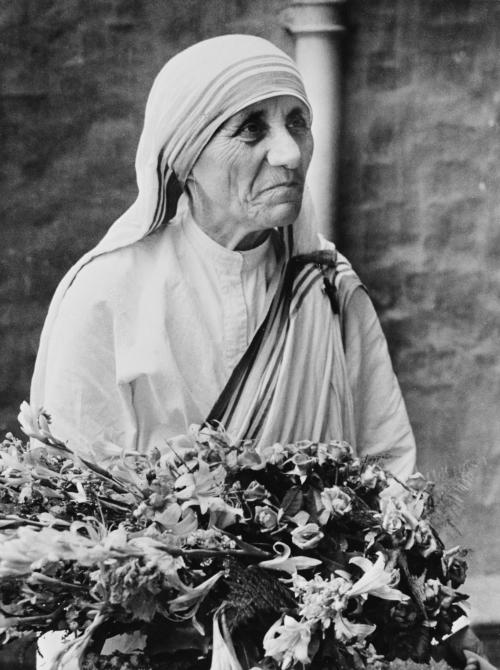
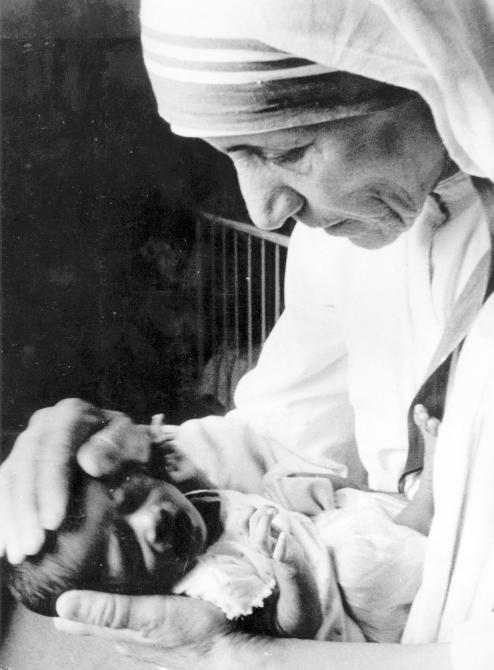
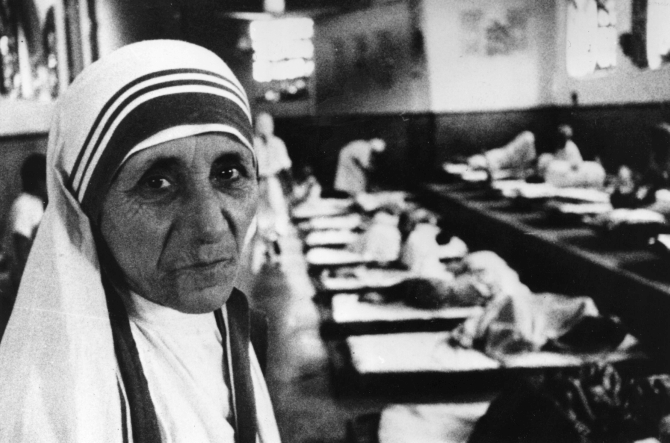

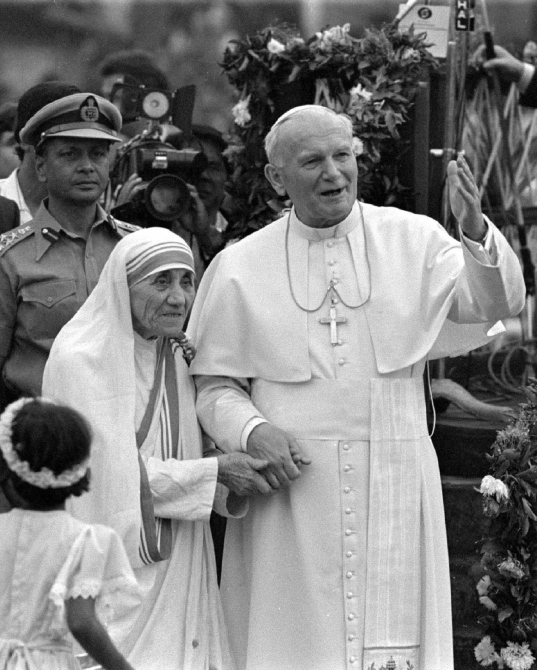

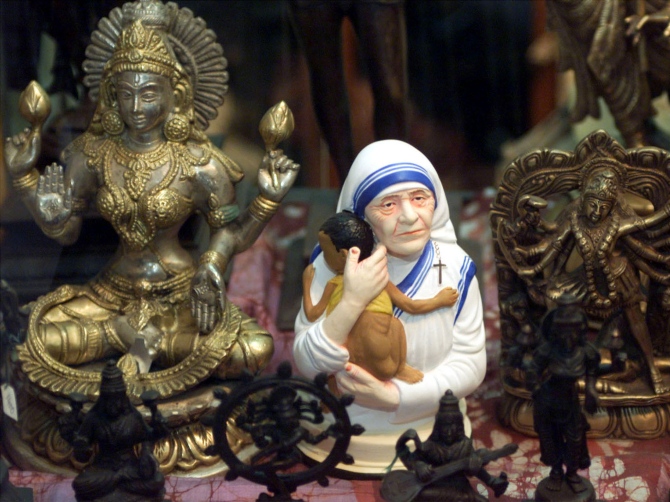
article